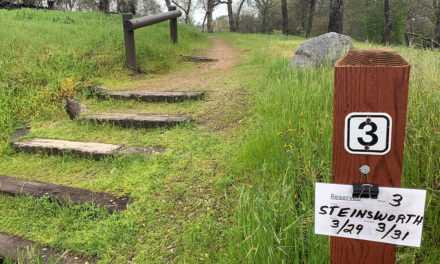Since starting my herb garden, I’ve had the privilege of nurturing a variety of herbs. But out of them all, thyme has captured my heart. Its rich aroma and subtle flavor make it my go-to spice, enhancing everything from roasted chicken to hearty stews. This post shares my top tips on how to grow and harvest thyme in Sacramento’s Zone 9b all year round.
So, get ready for a thyme-ful of insights!
How to Get Thyme On Your Side: Planting Essentials
Thyme, Thymus vulgaris, is a versatile, hardy herb with more than fifty known varieties. A Mediterranean native, thyme thrives in full sun and well-drained soil, making Sacramento’s Zone 9b an excellent habitat.
When choosing a location for your thyme, look for a location that is getting at least six hours of sunlight daily. The plant likes to have a pH between 6 and 8, so consider testing your soil before planting. If needed, amend the soil with lime to get the pH to rise or sulfur to lower it.
Watering Wisdom: Hydration Needs
Unlike some plants, thyme doesn’t require constant watering. Ensure the soil doesn’t remain waterlogged, as this can cause root rot. Once established in our Zone 9b, thyme can typically survive with natural rainfall and occasional supplemental watering during dry periods.
Propagation Station: Spreading the Thyme
Thyme is easily propagated through seeds, cuttings, or division. For seeds, sow them directly into the soil and expect germination within two weeks.
If you’re using cuttings, select a healthy stem and cut about 2-3 inches off, removing the leaves from the bottom half. Put the cutting into a simple glass of water, changing the water every two days. Once roots appear, plant your new thyme in a pot or the garden.
Division, on the other hand, involves splitting an established plant into two or more sections. This method is best performed in the spring or fall.
Harvesting Hints: Reaping Your Thyme Rewards
The beauty of thyme is its year-round harvest potential. The very best time to do your harvest is just before the plant flowers when the flavors are most potent. Use garden shears to cut off the top third of the plant, ensuring to leave the woody base intact. Regular harvesting encourages the plant to branch out and continue growing.
Caring for Your Thyme: Ensuring Longevity
Prune your thyme plant in early spring to promote new growth and maintain a compact shape.
In Zone 9b, thyme is perennial, so it will return year after year if properly cared for. Provide some protection during extreme weather conditions to ensure your thyme thrives.
Why isn’t my thyme thriving?
A common issue some gardeners face is their thyme becoming woody or leggy. This is usually going to be because there’s a need for more pruning or harvesting. Regular harvesting keeps your thyme plant healthy and promotes new growth.
So, there you have it!
My thyme-tested tips for growing and harvesting this delightful herb year-round in Sacramento’s Zone 9b. Isn’t it incredible how a tiny herb can add such a punch of flavor and fragrance to our culinary creations?
Have you tried growing thyme before? What are your favorite dishes to sprinkle it on?





